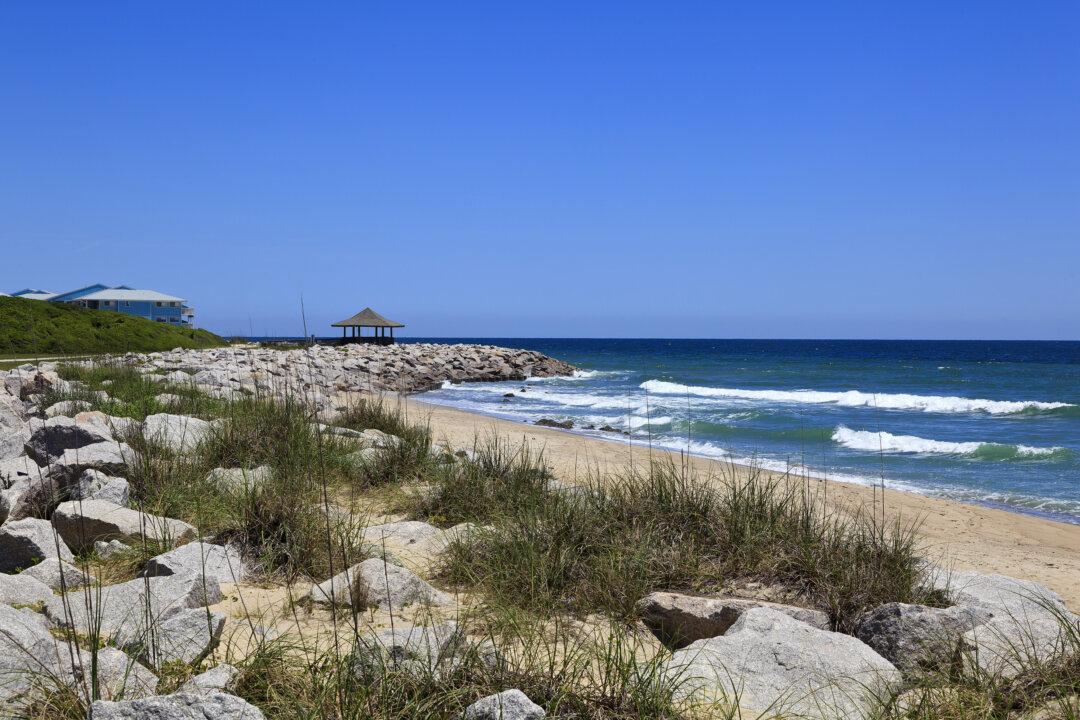The rutted dirt road was proving a challenge for our rented SUV. We were 50 miles from our destination, and our speed was barely 20 mph. Would we find a place to set up camp before dark?
We were winding our way through Alaska’s Wrangell-St. Elias National Park—the U.S. park system’s largest—so there had to be room for one little campsite, I thought to myself. But as we jostled in our seats past wide glacial streams and then thick brush that at times scraped against the windows, we realized the landscape was less-than-welcoming to two adventurers and a tent.
This was my first trip to Alaska and the third visit for my husband, Jon. Being national parks enthusiasts, we set an ambitious goal of seeing three of the state’s eight parks during our weeklong stay. Denali National Park had been first, and we would hit Kenai Fjords on our way out. That left us a couple of days in the middle for seeing Wrangell-St. Elias.

Two days? It now seems laughable to think that in less than 48 hours we could even begin to explore this remarkable area, the granddaddy of the National Park Service. Established in 1980 as both a park and a preserve, it covers 13.2 million acres—the equivalent of six Yellowstones. If you crave isolation, this is the place for you. If it’s rugged and varied landscapes you seek, Wrangell-St. Elias will deliver. Its grandeur comprises portions of four mountain ranges, massive glaciers, wildlife, forests, and even a historic mining settlement.
As dusk set in, Jon and I still were in search of a campsite. We reached a forested area and pulled off the road to an opening in the trees. Bingo. A tent-friendly space next to a rushing river was just what we needed. Then my jaw dropped as I looked up. Towering above was the skeletal remains of a 90-foot-tall trestle bridge. It looked like wooden scaffolding around a building under construction — but the scaffolding was the structure. And why such a strange relic in the middle of a national park? That night, we slept uneasily, wondering if a gust of wind would topple the rotted-wood bridge like a child’s toothpick creation.
The bridge, I learned later, was part of the 192-mile-long Copper River and Northwestern Railway, which was established to haul copper being mined in the area 100 years ago. Prices for copper ore at the time were high, so the pressure to complete the rail system was strong. The trestle section next to our tent stretched over the Gilahina River for almost 900 feet, the length of three football fields. Though the construction crews back in 1911 faced brutal conditions with temperatures as low as 65 degrees below zero, they finished the bridge in only eight days.

The mines were depleted in 1938, but not before a vibrant settlement had formed. It’s known today as Kennicott—or Kennecott depending on whom you ask—and the land remains privately owned smack in the middle of the park. Several trailheads are found around the old settlement, making it a hiker’s haven. We were determined to find one of them.
Morning came, we thanked the old bridge for staying put, and then continued on our way, negotiating the curves and hills until the road ended at a big parking area. No cars were allowed beyond it, but there was a minibus system of getting tourists and residents around in the area—a tiny-town version of public transit. We could have hoofed it to town, but Kennicott was more than two miles away and we wanted to save our energy for the hike. So we got tickets and hopped onto the “Kennicott shuttle” with a handful of other people.
The mining town has been restored somewhat, with any remaining buildings painted deep red. Most impressive is the old mill, which cascades in sections down a huge hill to the town’s main road. The town has been designated a National Historic Landmark. Standing among all the old structures now are food trucks, a guest house, private homes, and gift shops, creating an eclectic mix of history and commerce. We saw a tour group huddled under umbrellas as a light rain created puddles on the unpaved road.


With the help of a mask-wearing, socially distancing ranger outside Kennicott’s Park Service office, we chose a 3-mile hike that led to a massive glacier. The hike was rated easy to moderate (we saw families with young children do just fine), but most trails in Wrangell-St. Elias are not for the casual hiker. Explorers must know safe techniques for crossing streams, have proper clothing, and be well-versed in mountainous terrain and orientation. Backcountry permits are not required, but it’s wise to check with the rangers for advice on weather conditions and other safety precautions.
We donned our rain gear and started out on the Root Glacier Trail, an out-and-back hike that meanders through woods and over wooden bridges. After about a mile, we got our first view of the “toe” of the sprawling, 5-mile-long glacier. Beyond its dingy gray edges we could see pristine, bluish snow formations on the glacier’s surface that swirled as if they were put there by Disney’s Elsa herself. Without spikes for our boots, it was unsafe to walk out onto the glacier. When we saw a group of tourists putting on rented crampons, we regretted not thinking ahead. After lingering at the glacier site to take pictures, we made our way back to town.

By now, Kennicott had begun shutting down for the day, but some of the old buildings were left open to walk through without a tour guide. We poked around the machine shop and some cottages until dinnertime.
When Kennicott goes to sleep, neighboring McCarthy comes alive. The town, named after 19th-century prospector James McCarthy, runs on tourism and is the social hub of the area. Lodging and restaurants are available for non-camper types. The shuttle brought us to town, and we chose to get dinner at The Potato, which boasts “straight-up delicious food.” Among the menu options were burgers, wild Alaskan salmon, and curly fries, all in generous portions. Their hot chocolate warmed our bones from the misty rain that had returned.
Sadly, there was no time to linger. We had a 59-mile drive back to the park entrance, and we knew the road was unforgiving.
If You Go
Wrangell-St. Elias National Park is a seven-hour drive from Anchorage, and about nine hours from Fairbanks.Kennicott Glacier Lodge, a comfortable base for day trips: kennicottlodge.com, 800-582-5128 Tiny Cabins B&B: Airbnb.com, 907-980-2290 Ma Johnson’s Hotel, a former boarding house: [email protected], 907-554-4402






